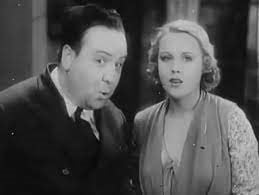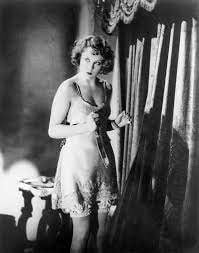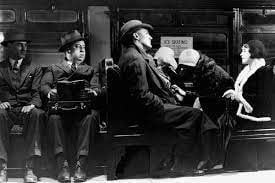
A quick glance into classic film history will return one name repeatedly, Alfred Hitchcock. Even the most novice cinema fan will have a few Hitchcock movies they can easily throw out to solidify their knowledge of film history. Most of the time, when speaking with someone about the go-to films from Hitchcock, titles like The Birds, Rear Window, Vertigo, and of course, Psycho are thrown around the most. However, all it takes is a little more appreciation for the craft of Hitchcock to have a fan wanting to dig deeper than the surface. Once this is done, an entire catalog of films will be unearthed.

Before she broke big with the films mentioned above, Hitchcock had a few silent films worth looking into. One of these is a movie titled, Blackmail. Before I go any further, I should say that technically, Blackmail was the first British “talkie” film. Two versions of the film were made, one talkie version and one silent version, to not leave out the theaters that had not updated their systems yet. It is essential to note the significance of a film like this coming out in 1929. A movie being released with any sort of talking at all was groundbreaking to many regions. Hitchcock knew that the industry was moving into the “sound” direction, so while he was filming this movie, he purposely shot specific scenes in a way that would work well for both silent and sound editing. After filming, the studio told him that they wanted to add sound to the film. Luckily, thanks to Hitchcock’s forward-thinking, it was not too challenging to add partial sound. The only major issue that he ran into when he added the sound was the thick Polish accent that the actress Anny Ondra had. He simply had her lines dubbed by Joan Barry reading the lines off-camera while Ondra mimed the words to fix this issue. Creativity like this earned Hitchcock his place as one of the most innovated and creative filmmakers who ever lived. Although this may seem like an apparent move to make today’s industry, this was an entirely new way of taking on the extra burden of adding sound to film.
When viewing Blackmail, it doesn’t take long to see Hitchcock’s fingerprints all over each scene. There are multiple complicated relationships all being tied together. A woman put in a horrible situation, murder, cover-up, and a big finale in a recognizable location. Although these situations have come up in other films by numerous filmmakers, there is something dark and almost thick about the way Hitchcock would do them.

This film follows the story of Alice, a young woman who is dating a Scotland Yard detective. One night when her boyfriend, Frank, fails to meet her expectations, Alice decides not to go out with Frank but instead leaves with a stranger that has been flirting with her. The stranger is an artist named Crewe. Alice follows Crewe back to his apartment to look at some of his artwork in an act she will soon regret. If she was able to curb her innocence for, but a moment, her life would have been drastically different. While in his apartment, Crewe creates an image of a naked woman. Alice, slightly worried now, pushes her feelings down deeper and, in jest, signs her name to the art piece. Crewe takes this as an opportunity and asks her to model for him. Things turn from creepy to deadly when he forces her onto the bed and begins assaulting her. In a desperate need to escape, Alice grabs a knife close by and kills Crewe. When she leaves, she is in a complete daze from the trauma that just occurred and has no idea that she was seen leaving the apartment. The next day when her boyfriend Frank is called to the scene, he notices one of her gloves there, and in an attempt to cover up (at least until he knows what’s going on) her actions, he takes the glove with him. However, when Frank goes to Alice’s fathers’ shop to speak with her about the glove, a mysterious man shows up with the other glove, and the Blackmail begins.
There are specific scenes in the film that stand out as being both suspenseful and utterly creative. When the murder occurs, the audience does not actually see what is going on due to the curtains around the bed. Instead, it is implied what is taking place, and once Crewe is dead, his hand rests lifelessly over the edge of the bed. This is important because, throughout the rest of the film, there are times when Alice will see someone resting their hand on a ledge or out of a car window and immediately be taken back to that horrible bedroom. This is a trick that Hitchcock will come back to many times in other films, showing something that triggers the feeling of a specific scene. He does this in the film Vertigo, with the circles signifying the feeling of falling. It is a simple trick; however, the subtlety in which he used them in his films is what creates the feeling of uneasiness for viewers. The rule of “less is more” is no more apparent than watching a Hitchcock film. Because of his signature touch, compelling story, and spectacular acting in Blackmail, the film was voted best British film in 1929, and in 2017, Time Out magazine ranked it the 59th best British movie ever made. Alfred Hitchcock was known for having small cameos in many of his films, although has his fame rose, he would have less screen time. His cameo in this film is one of his most extended screen times ever. Just a few minutes into the movie, we see a young boy pestering a man while trying to read a book; the reader, of course, is Hitchcock himself.
Written exclusively for TheLastPicture.Show by Jacob Ruble
Disclosure: The links on this page are “Affiliate Links” and while these are shown at no costs to our viewers, they generate commissions for our website(s)

